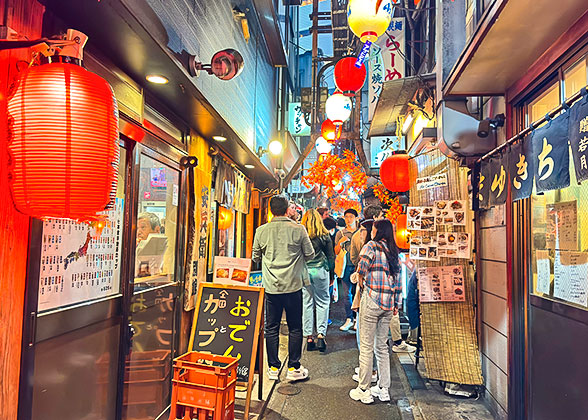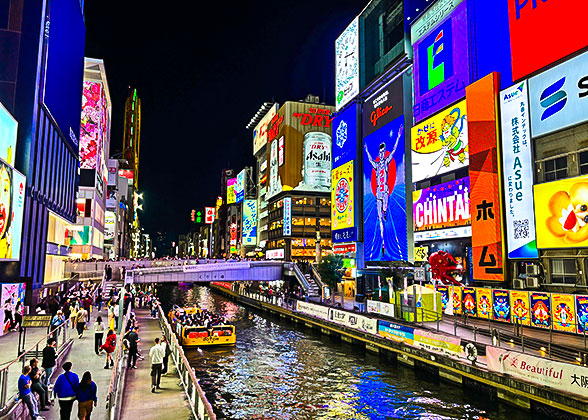Hakone Attractions
As a vacation resort in the west of Kanagawa and 90 kilometers (56 miles) southwest of Tokyo, Hakone is famous for abundant natural hot spring resources. Far away from the hustle and bustle of big cities like Tokyo, the region is suitable for visitors to relax, also due to its art atmosphere, natural beauty, and strong religious culture. The clear water in Lake Ashi and snow-capped Mount Fuji; the authentic paintings, sculptures, and pottery works by Picasso in Hakone Open Air Museum; the magnificent volcanic rocks and boiling sulfur spring water in Owaku-dani Valley; the legend of Nine-head Dragon, the one-week-long firework shows and sacrifice activities in Hakone Shrine in early August, all of these will contribute to a memorable trip to Hakone.Best Things to Do & Must-see Places in Hakone
Lake Ashi - A Great Site to Appreciate Mount Fuji
Lake Ashi was formed due to a volcanic eruption 3,000 years ago. The best way to appreciate the beauty of Lake Ashi is to take a cruising sightseeing ship on a clear day. Mount Fuji and the red Grate Gate of Peace, the entrance of Hakone Shrine, can both be seen. Or you can go to the summer palace of the Imperial Family. The palace provides walking trails for visitors to appreciate both the Lake Ashi and the palace.

Pirate Ship on Lake Ashi
|
Owaku-dani Valley- Formed by Volcanic Eruption 3,000 Years Ago
Nearly 3,000-year-old Owaku-dani Valley is still revealing the volcanic vitality. Here, you can observe the volcanic activities at a close distance, like the sulfur plume rising from underneath and boiling sulfur spring water. On the Observation Platform or before the Kuro-Tama Shop, Mount Fuji can be seen clearly. In addition, don’t forget to taste the delicious black eggs boiled in spring water, which is said to have the function of prolonging people’s life for 7 years. Hakone Geo Museum is also recommended, which exhibits Hakone’s different types of landforms with various models, stones, and words. Last, Enmei Jizo Bosatsu Jizoson is worth worshipping, as the legend has it that the god can relieve people’s suffering.

Owaku-dani Valley
|
Hakone Shrine- Experience Japanese Religious Culture
With more than 1,200 years of history, Hakone Shrine has long been worshiped by famous Japanese generals like Tokugawa Ieyasu (1543 – 1616). The Shrine is built near the famous Lake Ashi and on the sacred land, Hakon Mountain. The legends of the Nine-head Dragon and the dragon motifs inside the Shrine add the mysterious atmosphere here. The Great Gate of Peace, the 800-year-old cedar trees, and the antiques recording the local history in Treasure House are unmissable. Or you can pray for a safe trip or a smooth delivery for people you love. If coming here in late July, the grand Hakone Summer Matsuri Festivals will leave you with the best memories: the dazzling firework shows for a whole week, boating sailings, dancing of Soran groups, and Samurai sword exhibitions are all worth watching.

Hakone Shrine
|
Hakone Open Air Museum- A Paradise for Art Lovers
As the first open-air museum with sculpture as its theme in Japan, Hakone Open Air Museum satisfies art lovers, especially fans of Picasso. In the Museum, authentic works by Picasso like paintings and potteries, as well as about 120 pieces of sculpture works by masters all over the world including Émile-Antoine Bourdelle from France and Rainer Kriester from Germany, are displayed. Also, visitors will have great fun here: the colorful hammock and star-shaped maze enable children to have initial insight into art while playing; if you are tired, why not relax your feet at the Spring-Foot-Bath?
|
|
|
More Attractions in Hakone
1. Hakone Yumoto Onsen
As the biggest hot spring resort among the seven hot spring areas in Hakon, Hakone Yumoto Onsen originates from the 8th century. In the Edo Period (1603 – 1868), Hakone Yumoto Onsen was the famous wellness center. The temperature of spring water here ranges from 30℃ to 80℃ (86℉ - 176℉) , which helps reduce people’s tiredness.2. Hakone Venetian Glass Museum
The Museum is Japan’s first art museum that exhibits Venetian glassworks from the 15th to the 19th century. Apart from the delicate works, there is also a garden where the art works in the open air and beautiful natural scenery coexist harmoniously.3. Gora Park
This is a garden of French style. The large fountain, roses, and tropical plants will please your eyes. In addition, craft-making activities like making potteries, are also offered by the Park.
|
|
|
4. Okada Museum of Art
The Museum aims to display the artworks of Asian countries, including Japan, China, and Korea. The collections include paintings, potteries, Buddha sculptures, and lacquer works.5. Sengokuhara
Sengokuhara is an expansive grassland grown with miscanthus grass. Walking among mountains and grass with few people around, you will gain inner peace.The Most Popular Travel Itinerary in Hakone
![]() Time needed: 1 day
Time needed: 1 day
![]() Note: A tour vice versa is also feasible.
Note: A tour vice versa is also feasible.
You can start your Hakone journey by visiting Hakone Open Air Museum. From Hakone-Yumoto Station, take Hakone Tozan Line, get off at Chokokunomori Station, and then you can walk to Hakone Open Air Museum in 2 minutes.
After appreciating works by Picasso and other masters at Hakone Open Air Museum, it’s good to appreciate the natural scenery at Owaku-dani Valley. Return to Chokokunomori Station first, continue taking Hakone Tozan Line, and get off at Gora Station. Here take Hazonetozan Cable Car for about 50 minutes and get off at Sōunzan Station, from which take Hakone Ropeway for about 10 minutes and get off at Owakudani Station. Last, you can walk to Owaku-dani Valley in 2 minutes.
|
|
|
Finally, end your journey at Hakone Shrine: After taking Pirate Ship, get off at Hakone Sightseeing Cruise Motohakone-ko Pier, which is about 1,000 meters (1,100 yards) from the entrance of Hakone Shrine, you can walk there in 14 minutes.





